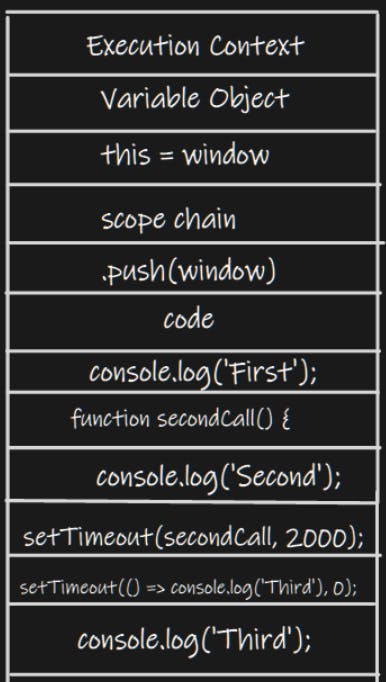
Photo by Amanda Jones on Unsplash
How JavaScript Works? How JavaScript Code is executed? Execution Context & Call Stack
🌟 Everything in JavaScript happens inside the execution context
The execution context is like a big box in which we have 2 components in it.
🧠 Memory Component: The first component inside javascript is the memory component. The memory component is also known as the variable environment.
In the Memory environment, the code variables are stored as the key-value pair. Even functions are stored as the key-value pair.
For example:
a: 10
function: {...}
⚙️ Code Component: The second component inside the execution context is the code component. The code component is also known as the thread of execution.
- The thread of execution is responsible for the running of code one line at a time. In a sequence.
🌟 Javascript can also be defined as a synchronous single-threaded language.
In which
Single Threaded means one command at a time.
Synchronous means in a specific order.
🔮 The execution context diagram shows the different stages of execution for each code snippet.
✨ Creation of the Context: The first stage is the creation of the execution context. This includes creating the variable object, setting the value of this keyword, and creating the scope chain.
🌟 Code's Grand Performance: The second stage is the execution of the code. This includes executing the statements and expressions in the script and evaluating any function calls.
🔥 Context's Farewell: The third stage is the destruction of the execution context. This includes destroying the variable object and scope chain.
👉🏻Execution context diagram👉🏻
🎭 Code Snippet 1: The Enchanted Timers
console.log('First');
setTimeout(() => console.log('Second'), 0);
console.log('Third');

🎭 Code Snippet 2:
console.log('First');
function secondCall() {
console.log('Second');
}
setTimeout(secondCall, 2000);
setTimeout(() => console.log('Third'), 0);
console.log('Third');

In the second code snippet, the console.log('First'); statement is executed first.
This statement prints the string "First" to the console. Next, the function secondCall() { console.log('Second'); } statement is executed.
This statement defines a new function named secondCall that prints the string "Second" to the console. Next, the setTimeout(secondCall, 2000); statement is executed.
This statement schedules the secondCall function to be executed after 2000 milliseconds. Finally, the console.log('Third'); statement is executed. This statement prints the string "Third" to the console.
🪄 Phases of execution context:
In the grand symphony of the execution context, we witness two mesmerizing phases:
🌌 Memory Creation Phase: The first phase is the memory creation phase. or CREATION PHASE. This is a very critical phase. 2. The second phase is the code execution phase.
🔥 Code Execution Phase: In this phase, javascript will allocate the memory to all the variables and functions. It will allocate the memory by reserving a space in the memory for the variables and functions.
Note: The memory defining the variables will be undefined in the first phase. And in the case of functions, it stores the whole code inside this memory space.
Code Execution Phase:
In this phase, the variable's actual value is now assigned to the undefined variable. And functions were left as it is.
Note: Now as in function we encounter function invocation, we use another execution context inside the pre-existed execution context. Which also have a memory and a code component. And again we will have the same procedure until the function will not through all the output.
When the whole function will get executed the newly created execution context will be deleted and we get back to our Global execution context.
And after the execution of the entire program, the javascript finishes its work and deletes the Global Execution Context.
⚡️But how JS can manage such a complex task?
🎶 Well, for this, JavaScript manages a stack. Which is also known as Call Stack. At the bottom of the stack, we have our Global execution context. Whenever javascript is assigned work, the whole execution context is pushed inside the stack.
- Whenever the function is invoked or a new execution context is created, it also gets pushed inside the Call Stack. When the newly added Execution context is done with its work, it got to pop out and the control goes back to the Global Execution Context(GEC) again.
This procedure keeps going until all execution contexts are finished. And with the end of GEC; the call stack also gets empty.
So by this, we can say,
Call stack maintains the order of execution of execution contexts
🎉
Question:
What do you call a JavaScript execution context that's always running?
A threadmill! 😂
